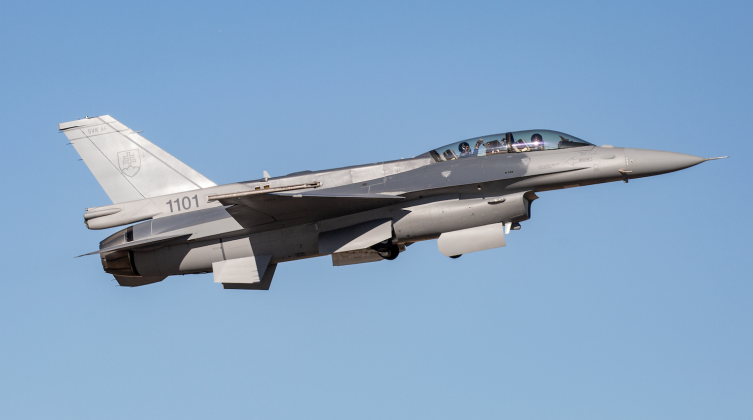News
World’s Most Dangerous F-16s Arriving in Eastern Europe: How Do Slovak Air Force F-16 Block 70s Stack Up Against F-35s?
The Slovak Air Force has received its first two F-16 fighters from the United States, with these ordered alongside 12 more of the aircraft under a $1.8 billion contract signed in December 2018.The aircraft were delivered at Lockheed Martin’s new production facility in Greenville, South Carolina, and will arrive in Slovakia in the summer. With production at the Greenville facility having faced significant delays, the last F-16s acquired as part of the contract will arrive in 2025. F-16s were acquired to replace MiG-29A and MiG-29UB fighters purchased from the Soviet Union in the final years of the Cold War, which Slovakia has since donated to Ukraine and which have seen multiple air to air engagements with Russian fighters in the theatre. The MiG-29 is a newer fighter than the F-16, and when it entered service was seen to have comfortable superiority over its American competitor particularly when comparing flight performances, both long and short range missiles, and the revolutionary use of helmet mounted sights pioneered by Soviet jets. Nevertheless these early production batch MiGs’ capabilities are today considered relatively limited by 21st century standards. The newly ordered F-16s by contrast have integrated a range of technologies developed in the three decades since the Cold War ended.

The F-16 Block 70s ordered by Slovakia are considered ‘4+ generation’ fighters with avionics on par with the latest F-35 stealth fighters in their sophistication, and are the most advanced F-16s ever produced. A primary advantage of the new F-16 variant is its integration of the APG-83 active electronically scanned array radar, which makes it a highly potent electronic warfare platform while providing a very high degree of situational awareness for a small fighter of its size. The radar’s sophistication helps to mitigate the disadvantages the F-16 has long suffered due to the very small size of the sensors it can carry as a light fighter aircraft. The only very notable area where the F-16 Block 70 has a disadvantage over prior models is its engine, with the F110-GE-129 having a maximum thrust of just 131.2 kN making it significantly weaker than the F110-GE-132 developed for F-16 Block 60 fighters for export to the United Arab Emirates. Although F-16s have seen relatively few orders in recent years, as most clients for new American fighters look to purchase fifth generation F-35s, the older jets have the advantage of much lower operational costs and maintenance needs. Slovak Air Force fighter availably rates are thus expected to be far higher than those in other European fleets such as Norway and Belgium which are acquiring F-35s, meaning aircraft will spend much less time on the ground for every hour in the air.

Slovakia is the only country which would not have been expected to face political restrictions if seeking to acquire F-35s, but which still opted to acquire F-16s. With the F-35 continuing to suffer widespread reliability issues, including approximately 800 defects with new ones continuing to be discovered, the F-16 by contrast as the second oldest fighter class in the world still in production has been tried and tested and is a much less complex design. Competing fighter classes from Europe, namely the Rafale and Eurofighter, are considered far less cost effective than their American rivals and suffer from both much higher operational costs and much lower availability rates than the F-16 even in the fleets of their producing countries. The F-16 Block 70’s capabilities, and its sensors and weaponry in particular, place it on an entirely different level to prior variants produced during the Cold War and into the 2000s which relied on mechanically scanned array radars and older generations of avionics and armaments. This includes expected compatibility with the American AIM-260 air to air missile, which may rival the Chinese PL-15 as the world’s most capable for fighter-sized aircraft. Slovakia’s acquisition contrasts sharply with that of Ukraine, which is set to receive very early production models of the F-16 which are considered effectively obsolete, and which do not offer significant advantages over the MiG-29s the country already fields. The U.S. Air Force has notably ceased acquiring F-16s since 2005, although issues with the F-35 have raised the possibility of resumed acquisitions of the older jets or another class of simple and lightweight fighter.












